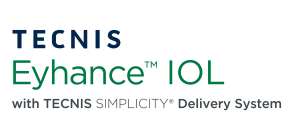Do you have cataracts? When you get cataract surgery, removing your natural lens is essential.
Doing this also eliminates the cataract that’s formed in it. You need a lens to see clearly. During cataract surgery, you’ll have your natural lens removed and replaced with an artificial lens.
Your new artificial lens is called an intraocular lens or IOL. There are many different kinds of IOLs available to help improve your vision.
Depending on your visual goals and lifestyle needs after cataract surgery, you may want to consider a premium lens. Premium IOLs can help you see better after cataract surgery than standard IOLs, with many offering the ability to correct presbyopia, along with refractive errors.
Keep reading to learn more about premium IOLs and determine which one may be right for you!
Comparing Standard IOLs and Premium IOLs
The standard IOL that most insurance plans will cover is a monofocal lens. A monofocal IOL, just like a monofocal lens used in a pair of glasses, is a lens that’s uniform all over.
It’s set to one refractive power, allowing you to see best at one focal point. The most common choice for patients with monofocal IOLs is having monofocal lenses in both eyes set at the same focal point, usually for seeing things far away.

You’ll be able to see well when looking at a distance, but you’ll need glasses if you want to see things at an in-between distance and up close. Getting monofocal IOLs in both eyes is what’s considered having typical cataract surgery.
Monovision
Some patients who get monofocal lenses choose to create something called monovision. With monovision, you’ll have one eye used for seeing things with a near focal point and the other eye used to see things for a further focal point. Using both of your eyes to see allows you to see decently between those focal points.
Monovision allows you to see pretty well, but even with it, you may still need reading glasses to see up close and things at an intermediate distance away from you. You also won’t have a complete range of vision.
Many IOLs help correct presbyopia, a common condition in adults over 40, much like cataracts. It affects most people as they get older, making it harder to focus up close.
On the other hand, premium lenses help make your vision as sharp as possible at more focal points and often reduce or eliminate the need for reading glasses. Although you need to pay out of pocket for premium IOLs, many cataract patients find that the benefits outweigh the cost immensely.
Choosing monovision or premium lenses takes having cataract surgery to the next level. At See Clearly Vision, we offer our patients many premium lens options, including:
Multifocal IOL
A multifocal IOL has alternating rings that fan out from the center of the lens. These rings alternate between two refractive powers.
The first refractive power is for seeing up close, and the other is for looking at things further away. When you have multifocal lenses, your eyes automatically look through the part of the lens that best helps you see what you’re looking at.
Choosing this premium IOL will allow you to see much more clearly up close than you could achieve with monovision. Multifocal IOLs also still provide you with good vision when looking at most distances.
Accommodative IOL
If you want a premium IOL that works like your natural lens, look no further than an accommodative IOL. Accommodative IOLs are lenses designed to mimic the way your natural lens moved.
These IOLs change shape when you focus on something up close, becoming thicker and then thinning out again when you’re looking at objects farther away. An accommodative lens gives you the ability to see well at most distances.
It also feels very natural since it imitates how your natural lens worked before being removed. Although it can feel more natural, choosing an accommodative IOL may not give you the crispest vision when looking at things up close compared to other premium lenses.
Due to this, you may still need reading glasses, but you’ll have improved vision for many different social and personal activities.
Eyhance IOL

The Eyhance IOL is another kind of monofocal lens. Unlike a standard monofocal lens, the Eyhance IOL provides you with the ability to see well, looking at things far away and an intermediate distance, meaning an arm’s length away from you.
It acts as a middle point between standard IOLs and other premium IOLs. Unlike a standard monofocal IOL, it doesn’t require relying on monovision.
Instead, each lens has a gradient of different refractive powers. The lens’s edges have a farther away focal point, and then they gradually transition to a closer focal point at the center of the lens.
Eyhance IOLs have an extended depth of focus to allow you to see better far away instead of only at an in-between distance, giving you a significant advantage over basic monofocal IOLs.
Synergy IOL
Out of all the premium IOLs currently available, the Synergy IOL provides you with the broadest range of vision. The Synergy IOL is a continuous depth of focus lens.
With a continuous depth of focus lens, instead of having segments set to different refractive powers, the IOL allows you to see well within a range of a fixed focal point. Because you don’t divide the degrees of vision on the lens, patients with the Synergy IOL enjoy clear vision, no matter how far away you look at something.

The Synergy lens enables you to see best with the most expansive range of distances while also letting you see very well up close, often eliminating the need for glasses. You’ll also be able to see better in all lighting, giving you a better ability to tell the difference between contrast.
Toric IOL
If you have astigmatism, you may want to choose a toric IOL. Many premium IOLs come in toric models.
Toric IOLs specifically correct astigmatism. The lens is precisely positioned in your eye to compensate for the football-like shape of the eye that astigmatism causes.
Toric lenses can often correct up to 3.00 diopters of astigmatism. This lens is excellent for anyone with mild astigmatism who wants to see better and reduce their dependence on glasses when they have cataract surgery.

Choosing the Right Premium IOL For You
With so many choices, it can feel challenging to decide on the right IOL before having cataract surgery. The good news is that your eye doctor will help you make this decision.
They will make a recommendation based on your lifestyle, visual needs, and goals after cataract surgery.
Do you need to have cataract surgery and aren’t sure if a premium IOL may be right for you? Schedule a cataract consultation at See Clearly Vision in Arlington, or Tysons Corner, VA, to learn more!



















